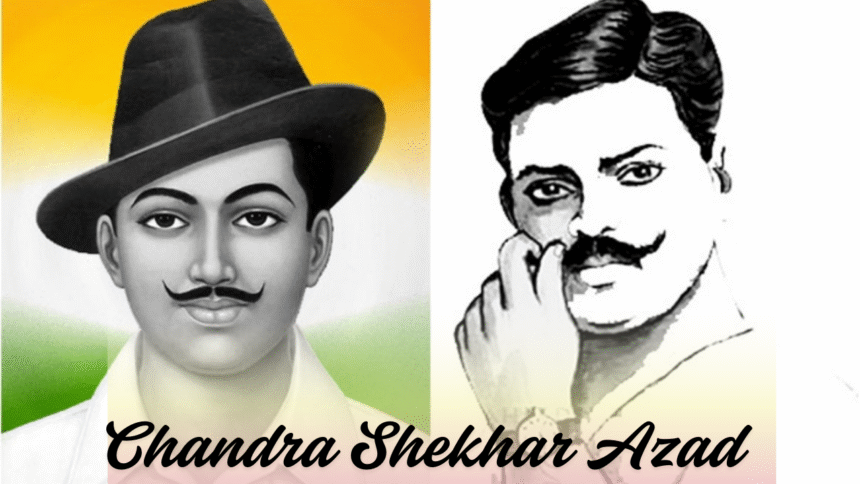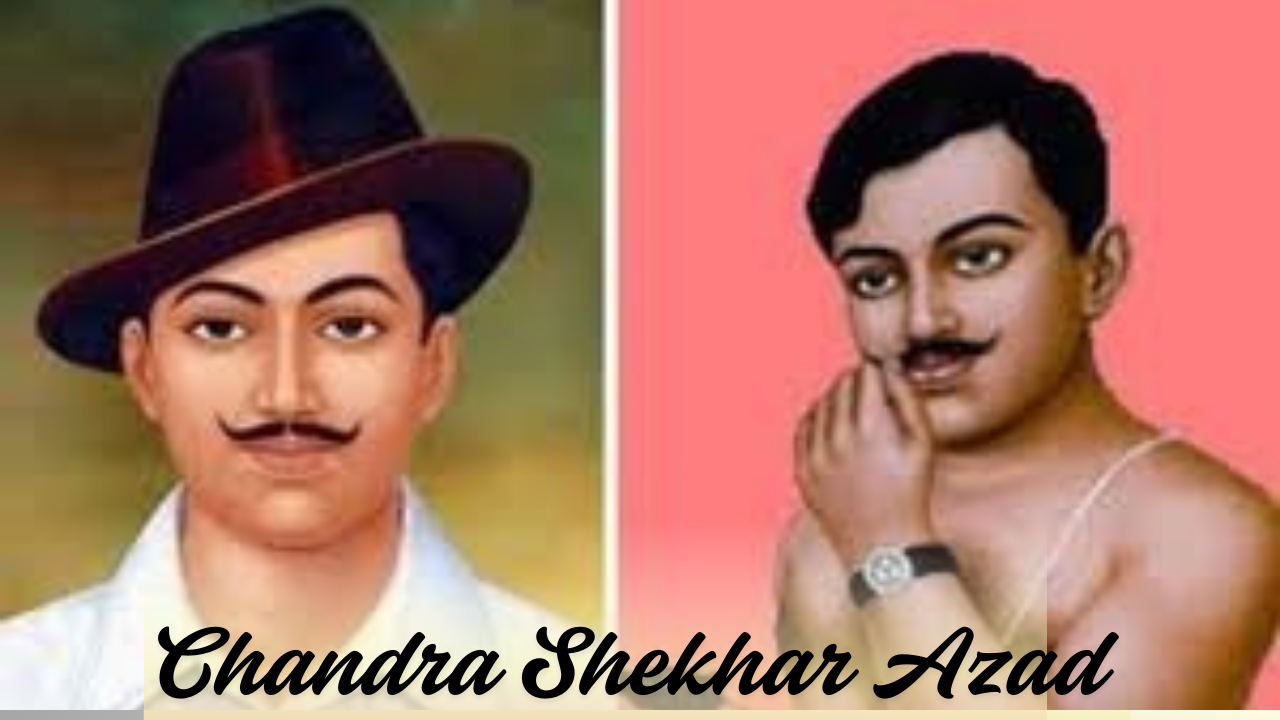Have you ever come over a story so effective that it gives you goosebumps? That’s precisely what happens when you jump into the life of Chandra Shekhar Azad Journey a intrepid progressive, a torch loyalist, and a man who denied to bow some time recently the British Domain. Azad wasn’t fair a opportunity warrior; he got to be a image of resistance, quality, and magnanimous adore for the motherland.
Born in a time when India was shackled by British colonial run the show, Azad didn’t fair dream of flexibility – he chased it with everything he had. His travel from a insidious young person to a incredible progressive is not fair motivating, it’s electrifying.
So, let’s roll back the pages of history and investigate how this youthful revolt carved his title into India’s flexibility battle with sheer coarseness, guts, and glory.
The Early Days: Born to Break Chains
Azad was born on July 23, 1906, in Bhavra, a little tribal town in the present-day state of Madhya Pradesh. His guardians, Sitaram Tiwari and Jagrani Devi, were straightforward, profoundly energetic people. From a youthful age, Azad was drawn to stories of valor and exemplary nature. He wasn’t the kind to acknowledge treachery quietly.
In 1921, amid the Non-Cooperation Development driven by Mahatma Gandhi, the young Azad bounced headfirst into the flexibility battle. He was fair 15 when he got captured whereas dissenting against the British. When brought some time recently the officer, he bravely announced his title as “Azad” (meaning “free”), his father’s title as “Swatantrata” (flexibility), and his home as “Imprison”. That was the minute a legend was born.
From Gandhi to Weapons: When Non-Violence Didn’t Feel Enough
While Chandra Shekhar Azad Journey appreciated Gandhi, the sudden suspension of the Non-Cooperation Development cleared out him baffled. He realized that respectful petitions and quiet dissents wouldn’t shake the establishment of British run the show. That’s when he floated towards the Hindustan Republican Affiliation (HRA), which accepted in outfitted revolution.
Here, Azad found his genuine calling. He got to be the spine of the HRA, afterward renamed the Hindustan Communist Republican Affiliation (HSRA). With his sharp vital intellect, unmatched boldness, and irresistible vitality, Azad developed as a key organizer and agent of progressive acts.
The Kakori Prepare Theft: Making Features and History
One of the most brave acts in India’s progressive history was the Kakori Prepare Theft in 1925. The thought? To plunder British government stores to fuel the flexibility development. Azad, along with Smash Prasad Bismil, Ashfaqulla Khan, and others, pulled off the heist with surgical precision.
Though the theft was fruitful, the British rapidly propelled a manhunt. A few of Azad’s comrades were caught and afterward hanged. But Azad? He vanished into the shadows, getting to be a phantom the British might never stick down.
A Coach, A Warrior, A Friend
Chandra Shekhar Azad Journey wasn’t fair a solitary wolf. He was a group player, a direct, and a tutor. One of his most noteworthy connections was with Bhagat Singh, another towering figure in India’s opportunity development. Together, they imagined an India free of persecution and inequality.
Azad prepared endless youthful progressives, educating them not fair how to shoot, but moreover how to think. For him, the insurgency wasn’t approximately chaos; it was around revamping the country on the columns of equity, uniformity, and self-respect.
Living Up to the Title ‘Azad’
If there was one promise Azad held sacrosanct, it was this: he would never be captured lively. That guarantee got to be his personality. In spite of being the most needed man in British India, he proceeded to work in the open, right beneath the nose of the colonial police.
His way of life was unassuming, his resolve unshakeable. He changed areas, names, and masks but never his mission. For him, each breath was a step towards a free India.
The Last Stand at Alfred Park
February 27, 1931 – a date carved in the heart of each nationalist. Azad was assembly a individual progressive at Alfred Stop in Allahabad (presently Prayagraj). Somebody tipped off the police. A furious weapon fight erupted.
Azad battled like a lion, holding off handfuls of outfitted policemen with a single gun and a few bullets. When he realized he was out of ammo and encompassed, he did what he had promised to do – he shot himself with his final bullet. Genuine to his title, Azad kicked the bucket a free man.
Legacy That Still Roars
Azad may have passed on youthful, but his soul lives on. Statues of him stand tall over the nation, particularly at Alfred Stop, which is presently called Chandrashekhar Azad Stop. Boulevards, schools, and educate bear his name.
More vitally, his story proceeds to light the fire of patriotism in youthful hearts. He didn’t live to see India free, but he made beyond any doubt flexibility got to be inevitable.
The Reasoning Behind the Gun
Let’s not disregard – Azad wasn’t a militarist. His choice to choose up arms was born out of dissatisfaction, not interest. He accepted in battling the foe when all other entryways were closed. He once said, “Don’t treat us as fear based oppressors. We are progressives with a purpose.”
His was a resistance of soul, not chaos. He needed a country where each citizen may breathe unreservedly, talk valiantly, and live with dignity.
Pop Culture and Azad
Over the a long time, Chandra Shekhar Azad Journey has been depicted in various movies, documentaries, and books. From Bollywood blockbusters to school plays, his red hot eyes and famous mustache are immediately recognizable.
But past the screen and pages, it’s the pith of Azad – the intrepid, uncompromising soul – that proceeds to inspire.
Why Azad Things Today
In a world frequently clouded by unresponsiveness and self-interest, Azad’s life reminds us of strength, give up, and standing up for what’s right. He didn’t battle for notoriety or fortune. He battled for freedom.
His story is a wake-up call. It tells us that alter isn’t served on a silver platter – it’s earned through sweat, give up, and soul.
Read More: Fix My Curls Product Rituals: How to Build a Self-Care Routine That Loves Your Hair Back
Conclusion
Chandra Shekhar Azad Journey wasn’t fair a progressive; he was a insurgency. His story isn’t fair almost battling the British; it’s around battling fear, treachery, and complacency.
Every time we talk our minds, walk openly, or request equity, we reverberate his soul. He may have fallen in a stop in Allahabad, but he rose in the hearts of millions.


